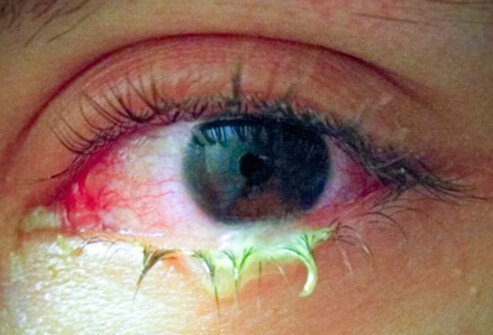Tobradex vs. Zylet
- Are Tobradex and Zylet the Same Thing?
- What Are Possible Side Effects of Tobradex?
- What Are Possible Side Effects of Zylet?
- What Is Tobradex?
- What Is Zylet?
- What Drugs Interact with Tobradex?
- What Drugs Interact with Zylet?
- How Should Tobradex Be Taken?
- How Should Zylet Be Taken?
Are Tobradex and Zylet the Same Thing?
Tobradex (tobramycin and dexamethasone ophthalmic suspension) and Zylet (loteprednol etabonate and tobramycin) are combinations of antibiotics and steroids used to treat bacterial infections of the eyes.
Side effects of Tobradex and Zylet that are similar include eye redness, discomfort, burning, stinging, irritation, itching; eyelid itching/swelling, blurred vision, and sensitivity to light.
Side effects of Zylet that are different from Tobradex include headache.
Use of Tobradex for prolonged/repeated periods may result in a new fungal eye infection and may increase your risk for other eye problems (e.g., glaucoma, cataracts).
Both Tobradex and Zylet may interact with other eye drops or eye medications
Tobradex may also interact with oral steroids.
What Are Possible Side Effects of Tobradex?
Common side effects of Tobradex include:
- eye redness,
- discomfort,
- burning,
- stinging,
- irritation,
- itching;
- eyelid itching/swelling,
- blurred vision, or
- sensitivity to light.
- Use of Tobradex for prolonged/repeated periods may result in a new fungal eye infection and may increase your risk for other eye problems (e.g., glaucoma, cataracts).
What Are Possible Side Effects of Zylet?
Common side effects of Zylet include:
- headache,
- sensitivity of the eyes to light, or
- blurred vision
What Is Tobradex?
Tobradex (tobradex b sulfate) is an antibiotic used to treat bacterial infections such as urinary tract infections, meningitis, blood infections, and eye infections.
What Is Zylet?
Zylet (loteprednol etabonate and tobramycin) is a combination of a corticosteroid and an antibiotic used to treat eye inflammation caused by surgery, infection, allergies, and other conditions. Common side effects of Zylet include stinging, burning, irritation, itching, discomfort, or redness of the eyes for 1 to 2 minutes when this medication is applied.
What Drugs Interact With Tobradex?
Tobradex may interact with oral steroid medications. Other drugs may interact with Tobradex ophthalmic. Tell your doctor all prescription or over-the-counter medicines or supplements you use. Tobradex should be used only when prescribed during pregnancy. It is not known if this medication passes into breast milk. Consult your doctor before breastfeeding.
What Drugs Interact With Zylet?
Other drugs may also interact with Zylet ophthalmic. Tell your doctor all prescription or over-the-counter medicines or supplements you use. During pregnancy, Zylet should be used only when prescribed. It is unknown if this drug passes into breast milk. Consult your doctor before breastfeeding.
How Should Tobradex Be Taken?
One or two drops of Tobradex ophthalmic should be instilled into the conjunctival sac(s) every four to six hours. During the initial 24 to 48 hours, the dosage may be increased to one or two drops every two (2) hours. Do not use other eye drops or medications during treatment with Tobradex ophthalmic unless directed by your doctor.
How Should Zylet Be Taken?
The recommended dose of Zylet is one or two drops applied into the conjunctival sac of the affected eye(s) every four to six hours. During the initial 24 to 48 hours, the dosing may be increased, to every one to two hours. Do not use other eye drops or eye medications during treatment with Zylet ophthalmic unless directed by your doctor.


